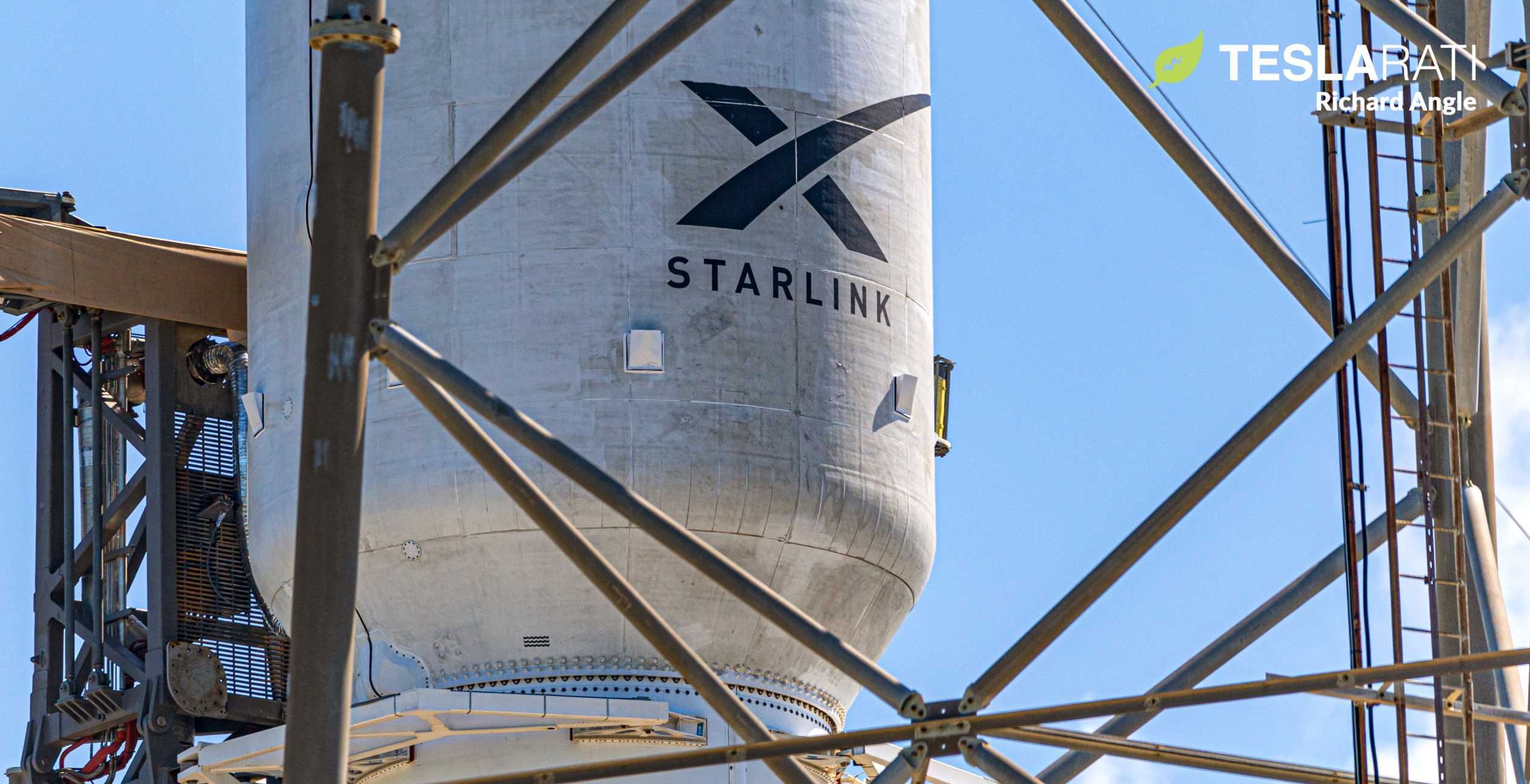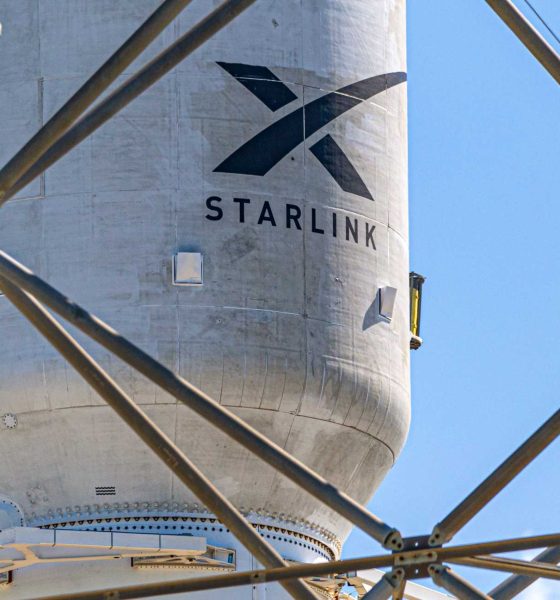

News
SpaceX Starlink beta arrives in the UK, sets sights on rest of Europe and Australia
As of the first day of 2021, SpaceX’s Starlink satellite internet beta program appears to have arrived in the United Kingdom in just one of numerous international debuts expected this year.
While not guaranteed to be the first outright, Reddit user OptiSport became the first confirmed Starlink beta customer outside of North America after receiving a beta kit (antenna dish, stand, and WiFi router) on or around January 1st. Beta invites began to roll out to those signed up at Starlink.com around mid-December, but OptiSport appears to be the first UK beta user to actually receive a Starlink user terminal.
According to others that received invites, SpaceX’s UK beta will kick off with pricing similar to the US and Canada, charging users £439 (+£54 shipping) for the dish and router and £89 per month for service. While the US – generally offering some of the slowest, most expensive internet in the developed world – is quite a different story, Starlink’s UK beta pricing unequivocally narrows its customer base to those simply unable to access the UK’s otherwise solid broadband infrastructure. Offering average download speeds of 100-150 Mbps, Starlink’s £89 UK offering can’t really stand with existing fiber, where the closest comparable mass-market option offers speeds of up to ~500 Mbps down for just £62 per month.
Still, as several /r/Starlink users and prospective UK beta applicants noted, those that fall outside of the UK’s wired infrastructure often find themselves stuck with expensive and inconsistent LTE/3G service or expensive, shoddy, and heavily constrained satellite offerings (£150/mo, 150GB data cap).
SpaceX’s Starlink beta UK rollout appears to be extremely cautious. At the moment, SpaceX appears to be shuffling a large portion of its active constellation, performing what is known as plane change maneuvers to modify where certain batches of satellites (known as planes) overfly the Earth.
Presumably meant to expand coverage and better distribute existing satellite capacity, there’s a chance that those plane change maneuvers – seemingly affecting almost 60% of all operational Starlink satellites – is harming network performance for those reliant upon some of those impacted planes. SpaceX did bluntly name the service as Starlink’s “Better Than Nothing Beta” but it’s still possible that the company has slowed beta rollouts during a period of engineered – but temporary – instability.
Regardless, SpaceX is currently hard at work seeking approvals to deliver Starlink internet services in more than a dozen other countries – each of which typically requires its own byzantine, unique, and nontransferable application process. Clear candidates for near-term Starlink service debuts include Greece (licensed, NET Q1 2021), Australia (partial license secured), and Germany (spectrum license secured, NET early 2021). Countries in the early stages of licensing include France, New Zealand, South Africa, India, Japan, the Philippines, Argentina, Brazil, Chile, and Colombia.
Ultimately, although countries with nationwide state-run censorship like Russia and China will pose major challenges, SpaceX’s goal is to offer Starlink internet to almost anyone on Earth.

Elon Musk
Starlink passes 9 million active customers just weeks after hitting 8 million
The milestone highlights the accelerating growth of Starlink, which has now been adding over 20,000 new users per day.

SpaceX’s Starlink satellite internet service has continued its rapid global expansion, surpassing 9 million active customers just weeks after crossing the 8 million mark.
The milestone highlights the accelerating growth of Starlink, which has now been adding over 20,000 new users per day.
9 million customers
In a post on X, SpaceX stated that Starlink now serves over 9 million active users across 155 countries, territories, and markets. The company reached 8 million customers in early November, meaning it added roughly 1 million subscribers in under seven weeks, or about 21,275 new users on average per day.
“Starlink is connecting more than 9M active customers with high-speed internet across 155 countries, territories, and many other markets,” Starlink wrote in a post on its official X account. SpaceX President Gwynne Shotwell also celebrated the milestone on X. “A huge thank you to all of our customers and congrats to the Starlink team for such an incredible product,” she wrote.
That growth rate reflects both rising demand for broadband in underserved regions and Starlink’s expanding satellite constellation, which now includes more than 9,000 low-Earth-orbit satellites designed to deliver high-speed, low-latency internet worldwide.
Starlink’s momentum
Starlink’s momentum has been building up. SpaceX reported 4.6 million Starlink customers in December 2024, followed by 7 million by August 2025, and 8 million customers in November. Independent data also suggests Starlink usage is rising sharply, with Cloudflare reporting that global web traffic from Starlink users more than doubled in 2025, as noted in an Insider report.
Starlink’s momentum is increasingly tied to SpaceX’s broader financial outlook. Elon Musk has said the satellite network is “by far” the company’s largest revenue driver, and reports suggest SpaceX may be positioning itself for an initial public offering as soon as next year, with valuations estimated as high as $1.5 trillion. Musk has also suggested in the past that Starlink could have its own IPO in the future.
News
NVIDIA Director of Robotics: Tesla FSD v14 is the first AI to pass the “Physical Turing Test”
After testing FSD v14, Fan stated that his experience with FSD felt magical at first, but it soon started to feel like a routine.

NVIDIA Director of Robotics Jim Fan has praised Tesla’s Full Self-Driving (Supervised) v14 as the first AI to pass what he described as a “Physical Turing Test.”
After testing FSD v14, Fan stated that his experience with FSD felt magical at first, but it soon started to feel like a routine. And just like smartphones today, removing it now would “actively hurt.”
Jim Fan’s hands-on FSD v14 impressions
Fan, a leading researcher in embodied AI who is currently solving Physical AI at NVIDIA and spearheading the company’s Project GR00T initiative, noted that he actually was late to the Tesla game. He was, however, one of the first to try out FSD v14.
“I was very late to own a Tesla but among the earliest to try out FSD v14. It’s perhaps the first time I experience an AI that passes the Physical Turing Test: after a long day at work, you press a button, lay back, and couldn’t tell if a neural net or a human drove you home,” Fan wrote in a post on X.
Fan added: “Despite knowing exactly how robot learning works, I still find it magical watching the steering wheel turn by itself. First it feels surreal, next it becomes routine. Then, like the smartphone, taking it away actively hurts. This is how humanity gets rewired and glued to god-like technologies.”
The Physical Turing Test
The original Turing Test was conceived by Alan Turing in 1950, and it was aimed at determining if a machine could exhibit behavior that is equivalent to or indistinguishable from a human. By focusing on text-based conversations, the original Turing Test set a high bar for natural language processing and machine learning.
This test has been passed by today’s large language models. However, the capability to converse in a humanlike manner is a completely different challenge from performing real-world problem-solving or physical interactions. Thus, Fan introduced the Physical Turing Test, which challenges AI systems to demonstrate intelligence through physical actions.
Based on Fan’s comments, Tesla has demonstrated these intelligent physical actions with FSD v14. Elon Musk agreed with the NVIDIA executive, stating in a post on X that with FSD v14, “you can sense the sentience maturing.” Musk also praised Tesla AI, calling it the best “real-world AI” today.
News
Tesla AI team burns the Christmas midnight oil by releasing FSD v14.2.2.1
The update was released just a day after FSD v14.2.2 started rolling out to customers.

Tesla is burning the midnight oil this Christmas, with the Tesla AI team quietly rolling out Full Self-Driving (Supervised) v14.2.2.1 just a day after FSD v14.2.2 started rolling out to customers.
Tesla owner shares insights on FSD v14.2.2.1
Longtime Tesla owner and FSD tester @BLKMDL3 shared some insights following several drives with FSD v14.2.2.1 in rainy Los Angeles conditions with standing water and faded lane lines. He reported zero steering hesitation or stutter, confident lane changes, and maneuvers executed with precision that evoked the performance of Tesla’s driverless Robotaxis in Austin.
Parking performance impressed, with most spots nailed perfectly, including tight, sharp turns, in single attempts without shaky steering. One minor offset happened only due to another vehicle that was parked over the line, which FSD accommodated by a few extra inches. In rain that typically erases road markings, FSD visualized lanes and turn lines better than humans, positioning itself flawlessly when entering new streets as well.
“Took it up a dark, wet, and twisty canyon road up and down the hill tonight and it went very well as to be expected. Stayed centered in the lane, kept speed well and gives a confidence inspiring steering feel where it handles these curvy roads better than the majority of human drivers,” the Tesla owner wrote in a post on X.
Tesla’s FSD v14.2.2 update
Just a day before FSD v14.2.2.1’s release, Tesla rolled out FSD v14.2.2, which was focused on smoother real-world performance, better obstacle awareness, and precise end-of-trip routing. According to the update’s release notes, FSD v14.2.2 upgrades the vision encoder neural network with higher resolution features, enhancing detection of emergency vehicles, road obstacles, and human gestures.
New Arrival Options also allowed users to select preferred drop-off styles, such as Parking Lot, Street, Driveway, Parking Garage, or Curbside, with the navigation pin automatically adjusting to the ideal spot. Other refinements include pulling over for emergency vehicles, real-time vision-based detours for blocked roads, improved gate and debris handling, and Speed Profiles for customized driving styles.








